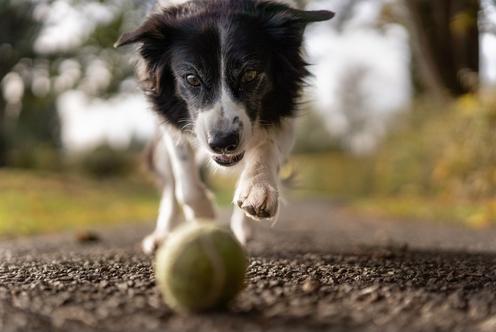
When the thought of becoming a dog owner first popped in my mind years and years ago, there were many questions I had to ask myself.
Am I ready to commit to caretaking for a dog for the foreseeable future? Will my roommates be on board with having a dog around? Can I afford all the expenses that come with owning a dog? Do I have time to fit a dog into my daily schedule?
All very important questions to take into consideration before adding a furry friend to your family. But there was one question that didn’t resonate with me as much as it should’ve at the time.
How much exercise does a dog need?
In my mind, I figured a few walks per day would probably get the job done. Fast forward to today and I’ve realized that’s not always the case and that this question is something all potential-dog owners should ask themselves if they are truly serious about adding a pup to their household.
“How much exercise does a dog need?” is a question you might’ve asked yourself, which is how you landed on this blog. With over a decade of experience as a dog owner myself, I’m here to help you answer that question and put this information to use so that your dog can live a happier, healthier life.
Why do dogs need exercise?
If your dog doesn’t get an adequate amount of exercise each day, it risks becoming unhealthy and overweight. According to a recent study from the Association for Pet Obesity Prevention (APOP), roughly 53% of dogs in the United States are overweight. And like us, dogs who are obese are more susceptible to health problems such as arthritis or heart disease.
To ensure your dog doesn’t become overweight, the first step is to visit your vet. There, your dog will get checked for any underlying medical conditions or signs of arthritis. If your dog does happen to have a preexisting condition such as inflamed joints or ligaments, the amount and intensity of exercise required will be relatively low.
Once your dog has been examined and your vet has informed you if your pup has any underlying conditions, the next step is to establish a routine to fit your dog’s exercise needs. Not only does a routine help your dog become better adjusted to their new home and lifestyle, but also stimulates your dog’s brain and promotes good behavior.
Your dog’s routine will be dependent on its age and breed. For instance, sporting and herding breeds like Collies, German Shepherds, and Retrievers have more endurance and stamina and will require more vigorous forms of exercise.
On the flip side, if you own a breed that is low maintenance such as Basset Hounds, Bulldogs, or Mastiffs, you can be more flexible with your routine because they require less exercise. The bottom line is that no matter the breed, your dog needs a routine that includes physical activity each day to maintain a happy and healthy lifestyle.
Map out at what your typical day looks like and think about the time you’ve set aside to get your pup some physical activity. If you don’t have a set routine, try to write down two times during the day where you and you dog can step outside and get some fresh air.
Is walking enough exercise for a dog?
Most dogs are not going to exercise themselves, which means it’s our responsibility to ensure they’re getting enough physical activity. While most dog owners will opt to take their dog for a walk a few times per day, some may be wondering, is that really enough? The answer to that question depends on the size, breed, and overall health of your dog.
Though the consensus among the majority of pet experts is that dogs should typically receive anywhere from half an hour to two hours of exercise every day, some dogs may need more intense exercise than a walk around the block.
It’s our job as dog owners to understand our dog’s traits and characteristics so that we can ensure they get the right amount of exercise. If you’d like to learn more about your dog and its breed, the American Kennel Club is a good resource.
While walks are generally OK for most dogs, it’s important for us dog owners to not think of these walks as just bathroom breaks. Walks can also offer behavioral training opportunities and chances for our pups to socialize with other dogs. If your dog has much more energy to burn throughout the day, it may be smart to incorporate other forms of physical activity in addition to a walk or two.





